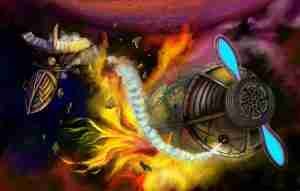Have you ever stopped to wonder how you’re reading these words right now? I mean, you’re not sounding out each letter or whispering the sentences to yourself (unless you are—no judgment). But your brain is decoding symbols, pulling in meaning, and making sense of it all… in milliseconds.
So, let’s crack open the skull (metaphorically, of course) and find out how the brain reads words.
It All Starts with Your Eyes
First stop on the reading journey: your eyeballs. As you read, your eyes don’t glide smoothly across the page. They jump in little bursts called saccades, focusing on one group of letters or words at a time.
Light hits the page, bounces into your retinas, and boom—your visual cortex (in the back of your head) goes to work. It starts processing the shapes of letters. But recognizing letters is only the beginning.
The Brain’s Reading Superhighway
Once your brain identifies a letter, it zips that info along a pathway of brain regions. One of the most important stops? The Visual Word Form Area (VWFA)—basically the VIP section for recognizing written words.
This area doesn’t come pre-installed at birth. It’s recycled from parts of the brain used for recognizing faces and objects. Through reading practice, your brain rewires this area to recognize written language quickly and automatically. That’s why, once you’re fluent, you don’t have to sound out “banana” every time you see it (unless it’s 3 a.m. and you’ve had no sleep).
Master Speed Reading and Memory
Unlock the secrets of speed reading and memory mastery. This practical guide helps you boost your reading speed, sharpen recall, and learn smarter—starting today.
Matching Letters to Sounds
Next up, your brain connects those letters to the sounds they make. This is handled by regions like Broca’s area (speech production) and Wernicke’s area (language comprehension).
You don’t just “see” a word—you hear it in your head, even when you read silently. That’s called subvocalization, and it helps many people understand and remember what they’re reading.
Meaning: The Final Frontier
Once your brain recognizes the word and hears its internal voice, it needs to understand the word’s meaning. That part’s handled by areas involved in memory and context, especially the angular gyrus and prefrontal cortex. These regions figure out how the word fits with the words around it, what it means in this sentence, and whether you should be laughing, crying, or Googling a definition.
The Silent Guardian
A vow of silence. A mission across centuries. One assassin holds the fate of humanity in his hands.
Adam never chose to be silent; the Phylax demanded it. Trained from childhood as a time-traveling enforcer, he slips through centuries to eliminate those who threaten the future. His latest mission: assassinate Emperor Qin Shi Huang before a ruthless plot ultimately destroys humankind.
What Happens When It Goes Wrong?
Sometimes, the system glitches. People with dyslexia, for example, may have trouble in the Visual Word Form Area or in linking letters to sounds. But it’s not about intelligence—it’s a different brain wiring that affects reading fluency.
The brain is impressively adaptable, though. With the right strategies and support, it can create new pathways and improve reading skills.
Final Thoughts: Reading Is a Brain Workout
Reading may seem effortless once you’re good at it, but under the hood, your brain is working like a Formula 1 pit crew. Every time you crack open a book, scroll through a blog, or read a cereal box, your brain lights up with coordinated activity.
So the next time you read, pause for a second and marvel at the miracle happening in your head. You’re not just reading—you’re decoding symbols, hearing invisible voices, pulling meaning from ink and pixels. That’s nothing short of magical.







